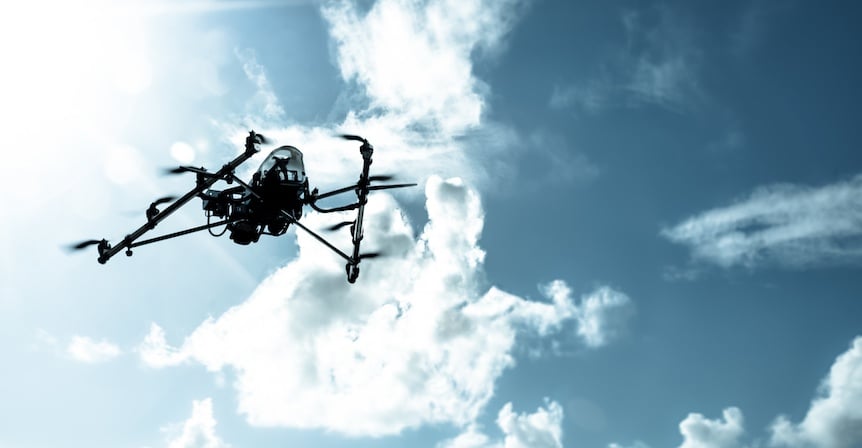
As a gadget nerd, I was one of the first kids on my block to get a drone. The problem was that I was 40 years old at the time—so I really did look like a nerd.
Because I’d been flying remote controlled airplanes my entire life, the learning curve wasn’t all that steep. After my first 5 minutes of flying, I knew—back then—this would be something BIG. It wasn’t long before I started thinking of how this would eventually enter my professional world of logistics.
Today in 2016, we still aren’t quite there—although Kenco is currently testing two different prototypes of inventory scanning drones. Here are a few thoughts—both for and against—the use of drones in the warehouse.
The Promises of Drones
Like many new innovative technologies, the use of drones in logistics come with many promises: “Perform your jobs better, faster, and cheaper than today.” “Automate more aspects of your supply chain.” “Human error will drastically decrease.” Drones are supposed to make these things better. Only time will tell how true these statements become, but we are excited about their potential application.
You also need to keep up with competing 3PLs and distributors. Amazon is testing them—so everyone must be, right? The lofty goals of drone package delivery are high reaching, but it has kickstarted a conversation around drone technology. This is all promising, but, ultimately, you need to weigh the cost of operation, maintenance, and manpower behind using drones before taking action with them.
…And the Limitations of Drones
Let’s start with the outdoors. Maybe you live in Chicago, and you can only use your drones half of the year. Weather prevents the possibility of drone use unless your locations have good weather year-round.
Outside of the weather, there are the general obstacles associated with being outdoors. If your yard has antennas, street lights, or power lines to get in the way of your “mission” (automated flight plan), you will be in for some trouble. And it doesn’t stop there. Battery technology currently limits a moderately equipped drone to about 15 minutes of flight time.
Aside from the technology, there are uncertainties with OSHA, the FAA, and insurance providers (although the FAA recently released some promising news.
And there is the training and trust you put in your employees. Should you just hand over a drone to an employee and hope for the best? No. You have to focus on training employees on drone usage, which means added costs. 3PLs need to take proper precautions to make sure no one gets hurt, the product is not damaged, and equipment (like the drone) is not damaged.
So What Do We Do for Now?
Again, our innovation lab is currently working with 2 solutions and are very encouraged with our initial prototypes. Each month our results – and those of others we are testing – get more promising. The bottom line? We don’t see a viable solution in the logistics market today. But check back with us in 6 months – things WILL be different.
{{cta(‘ac56a9fb-7647-4058-b69d-ff3e7acf5183’)}}
For now, we will simply lay the groundwork for drone applications in warehousing: We can begin to build and renovate our sites to be drone-ready. They will be doing inspections of buildings and solar panels on warehouses, to aerial photography.
So keep this in mind as you grow and change––drones will be involved. Just like we build extra conduits in our houses so that we can run cables as technology grows and we want new features in our homes, we need to do the same for our new, pre-drone construction.
